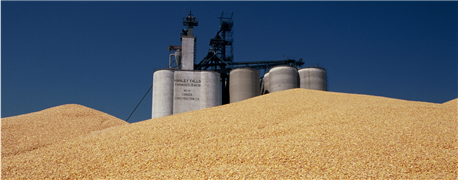May 20, 2016

The Agriculture Risk Coverage-County level payment fix proposed by North Dakota Corn Growers Association has made it into the proposed legislation.
North Dakota Sen. John Hoeven, who serves on the Agriculture Appropriations Committee, says the committee has included his amendment to the 2017 fiscal year ag funding bill,creating a $5 million, nationwide pilot program to improve the fairness of ARC county-level payment calculations for the 2016 crop year.
The amendment would allow the Farm Service Agency to determine yields when there are no National Agriculture Statistics Service (NASS) figures available.

County corn yields could be tallied in a new way for the Agriculture Risk Coverage program.
“The problem is that in some cases, there isn’t enough NASS data for a particular county to get an accurate assessment of yield and the USDA has substituted other yield data that in certain cases doesn’t match actual yields,” Hoeven says. ”This pilot program provides a backup, so that if a state’s Farm Service Agency office determines that USDA’s current calculation method is insufficient to make an accurate determination, an alternative method of documenting yields can be used that will provide farmers with a fair payment.”
“The North Dakota Corn Growers are very appreciative of Senator Hoeven’s leadership on the ARC county payment issue in urging USDA to find a fair method to calculate ARC,” says Carson Klosterman, president of North Dakota Corn Growers. “Passage of Hoeven’s amendment is an important step forward in making sure farmers don’t face the same yield disparities in crop year 2016 that they have experienced in the 2014 crop year, and we hope the Hoeven amendment sends USDA a strong message that it needs to find a solution for the 2014 and 2015 crop years.”
Under the pilot program, the USDA will provide state FSA offices a role in ensuring accurate yield determinations under the ARC program. If the FSA office finds a disparity between yield calculations in comparable counties, the office will have an opportunity to fix any inaccuracy by using an alternate calculation method. The alternative method could result in an additional payment for farmers in the affected counties to rectify the disparity.
Specifically, under the Hoeven pilot program, if a state FSA office determines that the alternate calculation method is necessary for a particular county, this method would work as follows:
If there is insufficient NASS data for a particular county or if the county NASS data produces a “substantially disparate” result, then a yield calculation for the county is determined by using NASS data from a comparable neighboring county; and
Should there be insufficient data from a comparable neighboring county, the state FSA can use reliable yield data from other sources such as Risk Management Administration (RMA) data or NASS district data.
ARC county payments became an issue for farmers in North Dakota because under the USDA’s current method of calculating yields, no payments were made to corn growers in LaMoure and Logan counties, and inadequate payments were made to farmers in Ransom and Steele counties for the 2014 crop year. Currently, yields are determined using voluntary yield data reported by producers to the NASS; however, in some counties reporting is sparse, resulting in no or inaccurate data on which to base ARC payments.
The Hoeven amendment is fully offset, with a $5 million reduction to the Agriculture Buildings and Facilities account.
North Dakota Corn and Sen. Hoeven’s office provided information for this report.
You May Also Like




